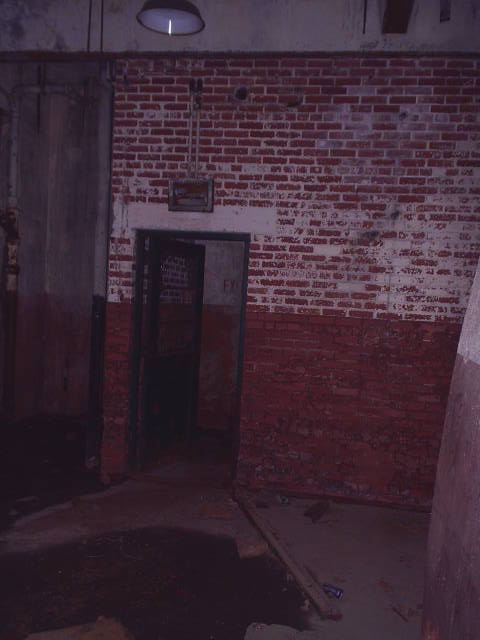In October 2004, Pennsylvania Highways webmaster and friend of the blog, Jeff Kitsko, hosted a road meet centered on the abandoned Pennsylvania Turnpike in Breezewood. I was fortunate to attend. What is unique about this trip to the abandoned highway is that we actually were able to drive on the old turnpike 36 years after it was bypassed. We also were able to walk into the offices and ventilation areas of the tunnels for a unique perspective of the old highway. Co-blogger Doug Kerr also was at the meet and some of his photos are included below.
Site Navigation:
Sources & Links:
 |
| From the start of our trip in Breezewood and looking back towards the Breezewood Interchange and the start of the abandoned Turnpike. (Doug Kerr) |
 |
| Entrance to the western portal of Ray's Hill Tunnel. At a length of only 2,532 feet, only one set of exhaust fans - at the eastern portal - was needed. |
 |
| After exiting the tunnel, autumn traveling motorists journeyed through a chute of color towards the Sideling Hill Tunnel, then the longest in the system. |
 |
| Near the western portal of Sideling Hill is this stone culvert built for the South Penn Railroad. |
 |
| A look inside the Sideling Hill Tunnel. You can see why many bikers and walkers decide to turn around and not make it to the other side. (Doug Kerr) |
 |
| Inside the Sideling Hill Tunnel and doorway leading to upstairs. (Doug Kerr) |
 |
| Graffiti is rampant inside the tunnel. (Doug Kerr) |
 |
| Looking back towards the eastern portal of Sideling Hill Tunnel, which is over 6700 feet long! |
 |
| A look at the abandoned pike from near the site of the former Cove Valley Travel Plaza. |
Site Navigation:
Sources & Links:
- Doug Kerr
- Abandoned Pennsylvania Turnpike ----Brian Troutman



Comments